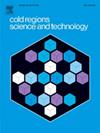Addressing class imbalance in avalanche forecasting
IF 3.8
2区 工程技术
Q1 ENGINEERING, CIVIL
引用次数: 0
Abstract
Natural disasters like avalanches and earthquakes are examples of rare events. Predicting such events using supervised classification machine learning models suffers from the class imbalance problem. The number of non-avalanche days exceed the number of avalanche days, and such data distribution skewness interferes with the construction of decision boundaries to support the decision-making procedure. This paper analyses class imbalance from the perspective of avalanche prediction by involving multiple classification approaches, three oversampling and two undersampling techniques, and cost-sensitive approaches. The supervised approaches aimed to predict days with and without avalanches as binary classification. The study was conducted using past 25 seasons of snow and meteorological parameters recorded for two climatologically diverse avalanche prone regions of Indian Himalayas with different levels of class imbalance. The paper also proposes more extensive use of evaluation metrics like balanced accuracy, geometric mean, Probability of Detection (POD) and Peirce Skill Score (PSS) that are pertinent to imbalanced class domains like avalanche forecasting. Extensive empirical experiments and evaluations amply demonstrate that these class balancing techniques lead to significant improvements in the performance of avalanche forecasting models for both regions, albeit with some variations. The POD values improved to 0.83 for Random Forest classifier, 0.65 for Support Vector Machine classifier and 0.75 for Logistic Regression classifier; PSS values also improved to 0.53, 0.47 and 0.5 for Random Forest, Support Vector Machine, and Logistic Regression classifiers, respectively. These findings are complemented by theoretical insights on the proposed solutions to the class imbalance. Our results suggest that the classification based avalanche forecasting models trained using proposed approaches can serve as valuable supplementary decision support tool for avalanche forecasters.
解决雪崩预测中的职业不平衡问题
雪崩和地震等自然灾害是罕见事件的例子。使用监督分类机器学习模型预测此类事件存在类不平衡问题。非雪崩天数超过雪崩天数,这样的数据分布偏性影响了决策边界的构建,无法支持决策过程。本文从雪崩预测的角度出发,采用多种分类方法、三种过采样和两种欠采样技术以及代价敏感方法对雪崩预测中的类不平衡进行了分析。监督方法旨在以二元分类的方式预测有和没有雪崩的天数。这项研究使用了过去25个季节的降雪和气象参数,记录了印度喜马拉雅山脉两个气候多样、等级不平衡程度不同的雪崩易发地区。本文还建议更广泛地使用评估指标,如平衡精度,几何平均值,检测概率(POD)和皮尔斯技能分数(PSS),这些指标与雪崩预测等不平衡类领域相关。广泛的经验实验和评估充分表明,尽管存在一些差异,但这些类平衡技术可以显著改善这两个地区的雪崩预测模型的性能。随机森林分类器POD值提高到0.83,支持向量机分类器POD值提高到0.65,逻辑回归分类器POD值提高到0.75;随机森林、支持向量机和逻辑回归分类器的PSS值也分别提高到0.53、0.47和0.5。这些发现得到了对阶级不平衡的解决方案的理论见解的补充。我们的研究结果表明,使用所提出的方法训练的基于分类的雪崩预测模型可以作为雪崩预报员有价值的辅助决策支持工具。
本文章由计算机程序翻译,如有差异,请以英文原文为准。
求助全文
约1分钟内获得全文
求助全文
来源期刊

Cold Regions Science and Technology
工程技术-地球科学综合
CiteScore
7.40
自引率
12.20%
发文量
209
审稿时长
4.9 months
期刊介绍:
Cold Regions Science and Technology is an international journal dealing with the science and technical problems of cold environments in both the polar regions and more temperate locations. It includes fundamental aspects of cryospheric sciences which have applications for cold regions problems as well as engineering topics which relate to the cryosphere.
Emphasis is given to applied science with broad coverage of the physical and mechanical aspects of ice (including glaciers and sea ice), snow and snow avalanches, ice-water systems, ice-bonded soils and permafrost.
Relevant aspects of Earth science, materials science, offshore and river ice engineering are also of primary interest. These include icing of ships and structures as well as trafficability in cold environments. Technological advances for cold regions in research, development, and engineering practice are relevant to the journal. Theoretical papers must include a detailed discussion of the potential application of the theory to address cold regions problems. The journal serves a wide range of specialists, providing a medium for interdisciplinary communication and a convenient source of reference.
 求助内容:
求助内容: 应助结果提醒方式:
应助结果提醒方式:


